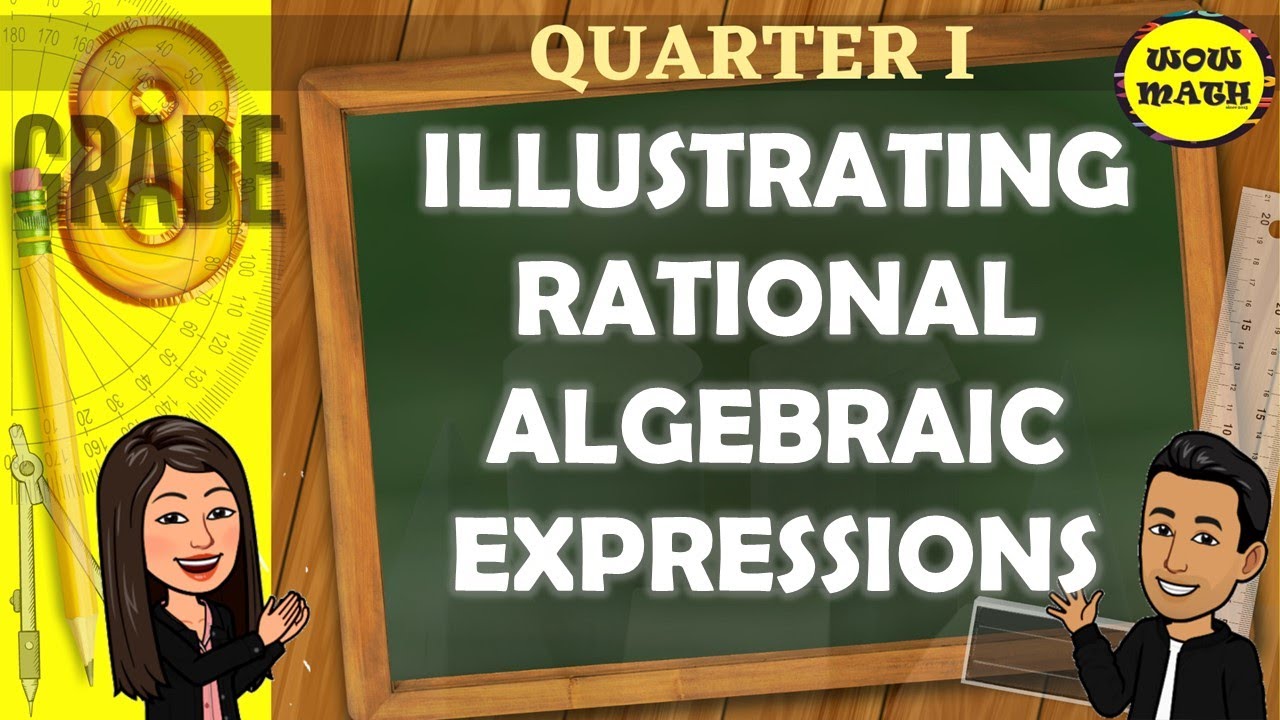Alg 1 2.1 Part 1 Write, Interpret, and Simplify Expressions
Summary
TLDRThis educational video script focuses on algebraic expressions, emphasizing the importance of understanding their components and simplification. It defines expressions as math phrases consisting of numbers, variables, and operations, distinct from equations due to the absence of equal signs. The script introduces terms, coefficients, and constants, highlighting their roles in expressions. It also explains the distributive property as a shortcut for multiplication over addition and subtraction, and illustrates how to identify and combine like terms to simplify expressions. Practical examples are provided to clarify these concepts.
Takeaways
- 📘 An expression is a math phrase made up of numbers, variables, and operations without an equal sign.
- 🔢 Expressions can be simplified to their smallest form, like reducing 16 + 5 to 21.
- 🔑 The terms of an expression are the parts that are added together, like 5A and 6 in the expression 5A + 6.
- 🆗 To simplify expressions, rewrite subtractions as additions of a negative to make it easier to identify like terms.
- 📐 Coefficients are the numerical parts of variable terms, like the 6 in 6X or the 8 in 8Y.
- 👉 If a variable stands alone without a number, its coefficient is understood to be 1.
- 🔄 The distributive property allows multiplying a number by a sum, like a * (b + c), by multiplying the number by each term inside the parentheses and then adding the results.
- 📚 Like terms are terms with the same variable and exponent parts, such as X and 6X or 3X^2 and -5X^2.
- 📉 Constants are terms without variables, like the number 5, which remain unchanged regardless of variable values.
- 📌 Equivalent expressions are different ways of writing the same value, such as 16 + 5 and 21.
Q & A
What is an expression?
-An expression is a math phrase made up of numbers, variables, and math operations. It does not have equal sides and is not an equation.
What is the difference between an expression and an equation?
-An expression is a math phrase without equal signs, while an equation has an equal sign and represents a statement that two expressions are equal.
What are equivalent expressions?
-Equivalent expressions are expressions that have the same value but may be written in different ways, such as 16 plus 5 and 21.
What are the terms in an expression?
-The terms in an expression are the parts that are added together. For example, in the expression 5A plus 6, 5A and 6 are the terms.
How do you rewrite an expression to show addition when there is subtraction?
-You rewrite subtraction as adding a negative. For instance, 6x minus 4 plus 8y can be rewritten as 6x plus negative 4 plus 8y to show addition.
What is a coefficient in an algebraic expression?
-A coefficient is the numerical part or the number part of a variable term in an expression. For example, in the term 6X, the coefficient is 6.
If a variable term has no number part, what is its coefficient?
-If a variable term has no number part, like X plus five, the coefficient is one, as it implies one X.
What is a constant in an algebraic expression?
-A constant is a term in an expression that does not change regardless of the variables' values, such as the number 5 in an expression.
How does the distributive property simplify expressions?
-The distributive property allows you to multiply a number by each term inside a parenthesis and then add the results, simplifying the expression, like 3 times (4 plus 2) can be simplified to 3 times 4 plus 3 times 2.
What are like terms?
-Like terms are terms in an expression that have the same variable and exponent parts, such as X and 6X, or 3X squared and negative 5X squared.
Why can you only add like terms?
-You can only add like terms because they have the same variable and exponent parts, allowing them to be combined into a single term.
Outlines

Dieser Bereich ist nur für Premium-Benutzer verfügbar. Bitte führen Sie ein Upgrade durch, um auf diesen Abschnitt zuzugreifen.
Upgrade durchführenMindmap

Dieser Bereich ist nur für Premium-Benutzer verfügbar. Bitte führen Sie ein Upgrade durch, um auf diesen Abschnitt zuzugreifen.
Upgrade durchführenKeywords

Dieser Bereich ist nur für Premium-Benutzer verfügbar. Bitte führen Sie ein Upgrade durch, um auf diesen Abschnitt zuzugreifen.
Upgrade durchführenHighlights

Dieser Bereich ist nur für Premium-Benutzer verfügbar. Bitte führen Sie ein Upgrade durch, um auf diesen Abschnitt zuzugreifen.
Upgrade durchführenTranscripts

Dieser Bereich ist nur für Premium-Benutzer verfügbar. Bitte führen Sie ein Upgrade durch, um auf diesen Abschnitt zuzugreifen.
Upgrade durchführenWeitere ähnliche Videos ansehen

BENTUK AKAR Kelas 10 Kurikulum Merdeka

Hlm 124 - 132 Part 1 BENTUK ALJABAR MATEMATIKA SMP KELAS 7 KURIKULUM MERDEKA

Polynomials - Classifying Monomials, Binomials & Trinomials - Degree & Leading Coefficient

ILLUSTRATING RATIONAL ALGEBRAIC EXPRESSIONS || GRADE 8 MATHEMATICS Q1

2 PENJUMLAHAN DAN PENGURANGAN ALJABAR - ALJABAR - KELAS 7 SMP

ALJABAR PART 1 (PENJUMLAHAN DAN PENGURANGAN)
5.0 / 5 (0 votes)
